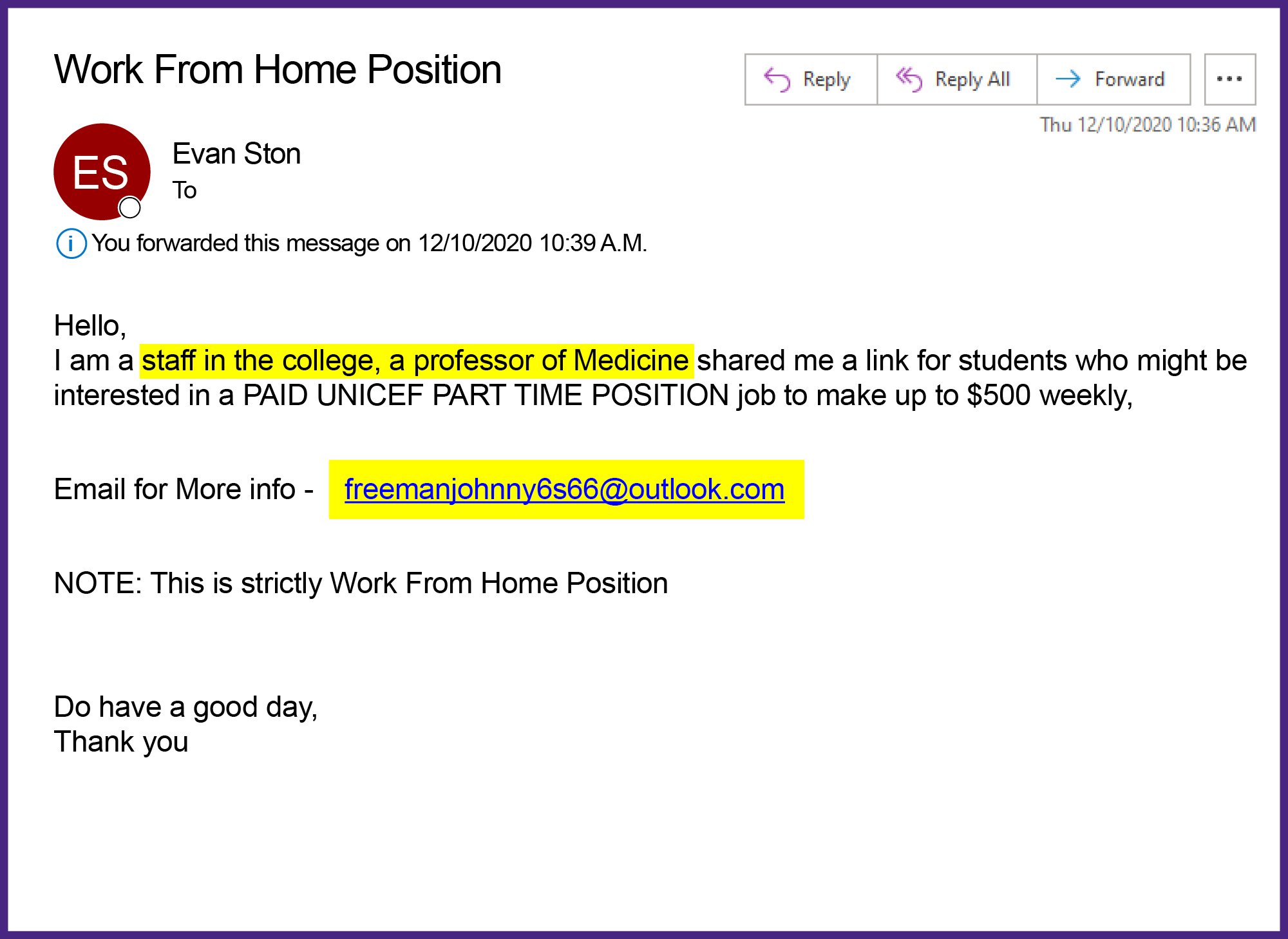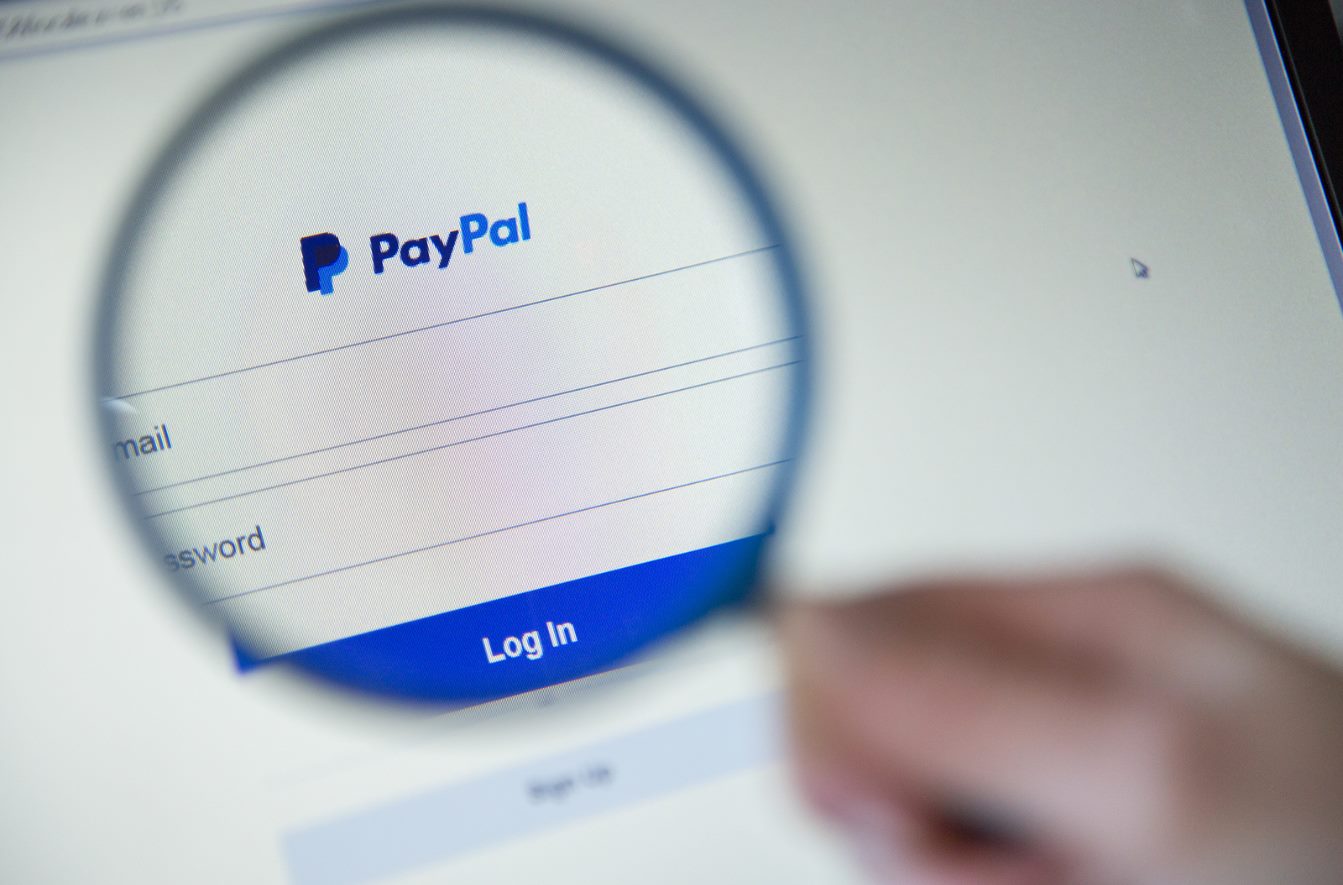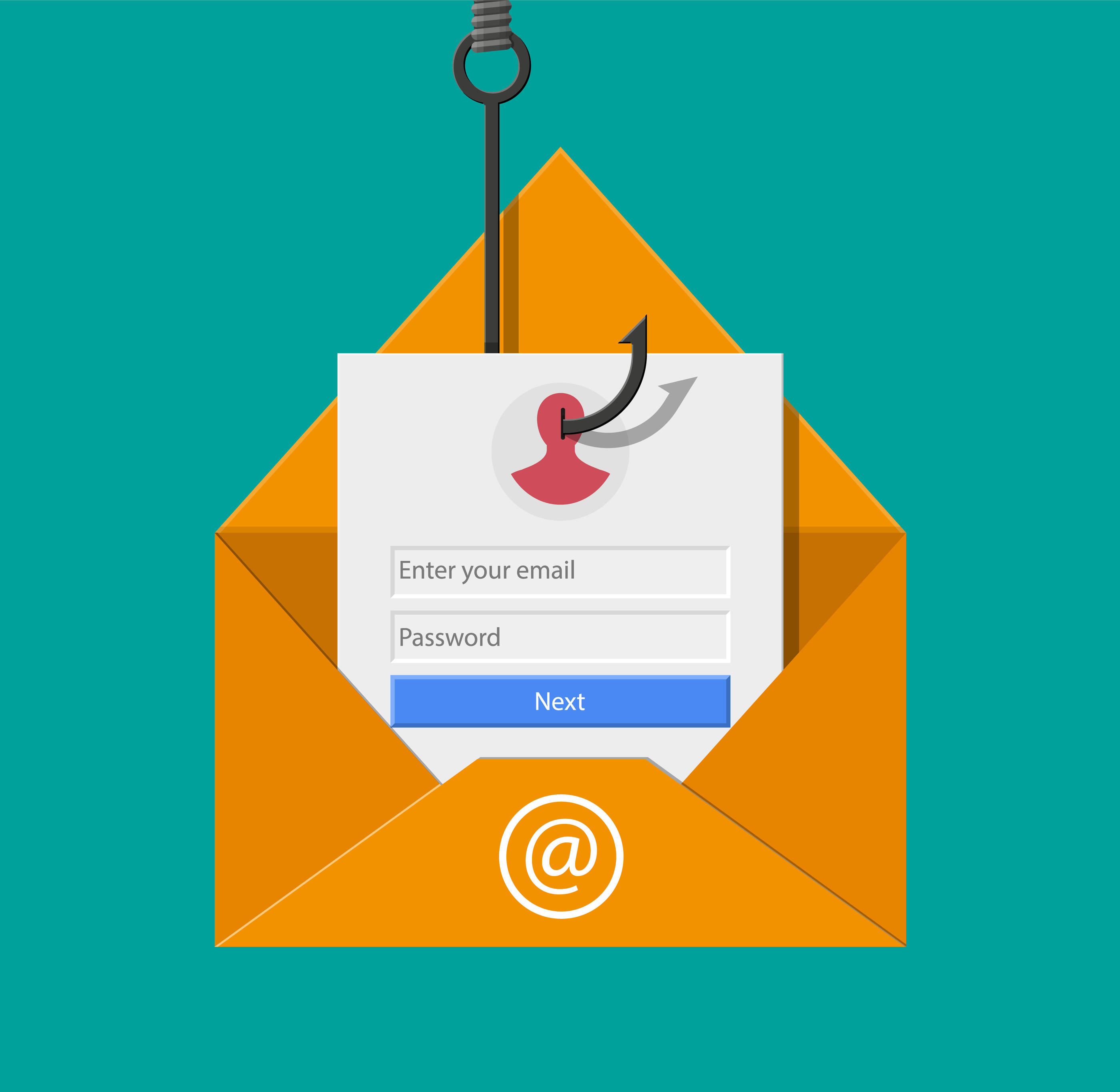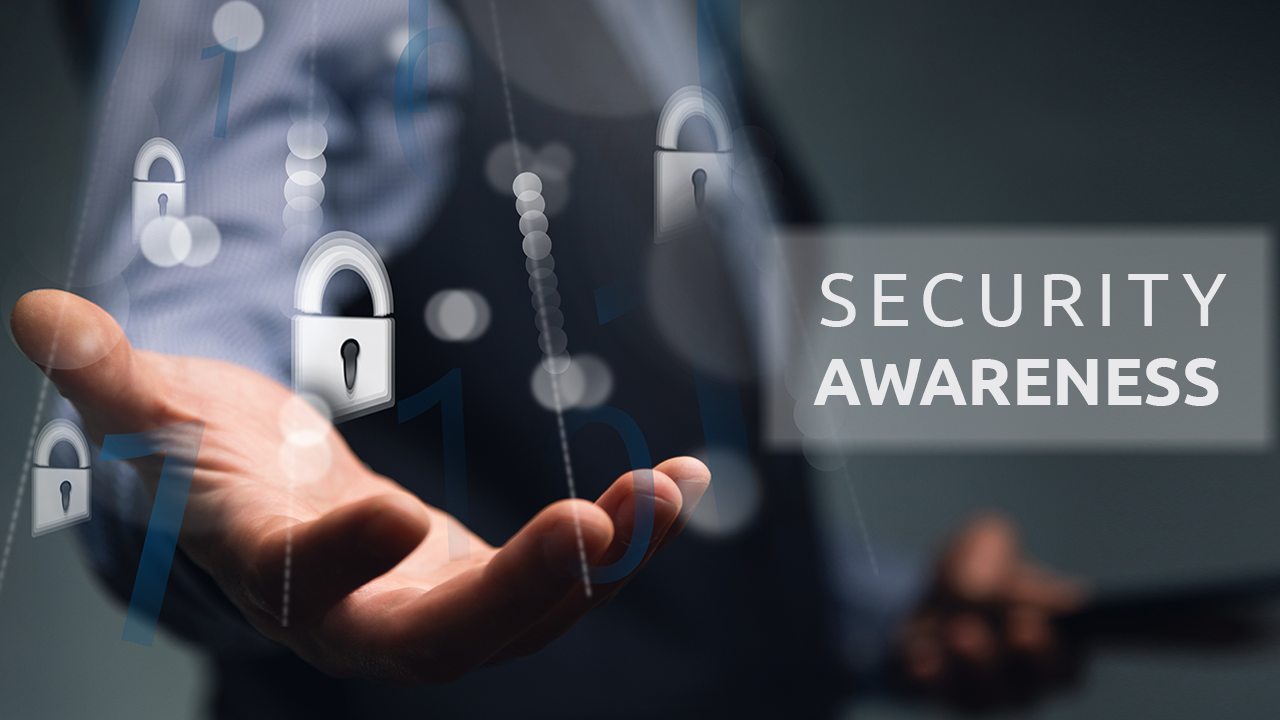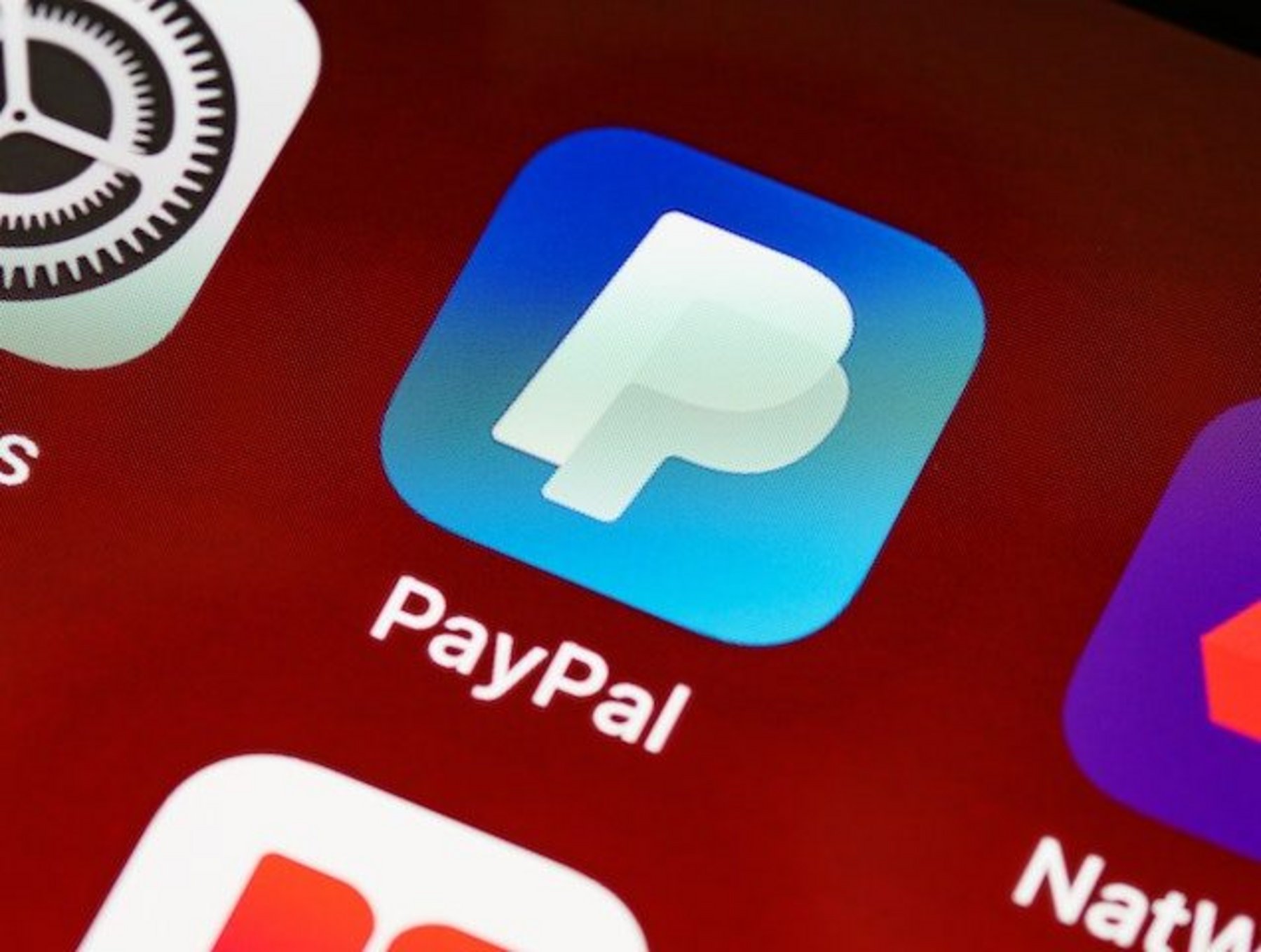Introduction
Email phishing has become a prevalent and dangerous form of cybercrime that targets individuals and organizations worldwide. It involves cybercriminals attempting to deceive recipients into divulging sensitive information, such as personal details, passwords, or financial data, by pretending to be a trustworthy entity. The consequences of falling victim to phishing can range from financial loss to identity theft or even the compromise of an entire organization’s network and data.
With the ever-increasing sophistication of phishing attempts, it is crucial for individuals and businesses to be vigilant and stay informed about the latest techniques employed by cybercriminals. This article aims to provide valuable insights into recognizing email phishing attempts and taking necessary precautions to protect oneself and maintain a secure online presence.
Throughout this article, we will explore common signs of email phishing that can help you spot potential scams or fraudulent messages. By familiarizing yourself with these warning signs and adopting best practices for email security, you can safeguard your personal information and minimize the risk of falling victim to these malicious activities.
Remember, prevention is key in combating email phishing attacks. By developing a healthy skepticism and exercising caution when interacting with unsolicited emails, you can significantly reduce the likelihood of becoming a victim. So let’s dive in and learn how to identify and protect ourselves from email phishing attempts.
What is Email Phishing?
Email phishing is a cybercriminal technique where scammers send fraudulent emails disguised as legitimate entities, such as banks, government agencies, or well-known companies. These deceptive emails are designed to trick recipients into disclosing sensitive information, such as passwords, credit card numbers, or social security numbers. The ultimate goal of email phishing is to use the obtained information for financial gain, identity theft, or other malicious purposes.
Phishing emails often employ various strategies to deceive recipients into believing they are from a trustworthy source. They may use familiar logos, official-looking email addresses, and sophisticated language to make the email appear genuine. Additionally, phishing emails often leverage social engineering techniques to manipulate people’s emotions and prompt them to take unintended actions.
For instance, a phishing email may claim that there is an issue with the recipient’s bank account and provide a link to resolve the problem. This link redirects the user to a fake website that looks identical to the legitimate bank’s site, tricking the victim into entering their login credentials. The cybercriminals can then use this information to gain unauthorized access to the victim’s account and perform fraudulent activities.
It is worth noting that email phishing is not limited to personal accounts. Businesses are also vulnerable to targeted phishing attacks known as spear phishing. In spear phishing, scammers research and personalize their emails to make them appear more convincing, often targeting high-level executives or employees who have access to sensitive data or financial systems.
The success of email phishing attacks relies on the recipients’ lack of knowledge and awareness. Cybercriminals utilize psychological tactics, urgency, and fear to manipulate individuals into providing valuable information unwittingly. Therefore, it is imperative to understand the nature of email phishing and how to identify potential scams to protect ourselves and our confidential information.
In the next section, we will explore the dangers of email phishing and why it is essential to remain vigilant and take preventive measures to mitigate this threat.
Why is Email Phishing Dangerous?
Email phishing poses significant risks to individuals and organizations alike. Understanding the dangers associated with email phishing is crucial in developing effective strategies to defend against these cyber threats.
1. Financial Loss: One of the most immediate and direct consequences of falling victim to email phishing is financial loss. Cybercriminals can gain access to your personal or financial accounts, leading to unauthorized transactions, drained bank accounts, or fraudulent credit card charges. Recovering these lost funds can be challenging and may involve lengthy processes and legal proceedings.
2. Identity Theft: Email phishing often aims to collect personal information, such as social security numbers, addresses, and birthdates, which can be used for identity theft. Once perpetrators have this information, they can open new credit accounts, apply for loans, or commit other fraudulent activities in the victim’s name. Recovering from identity theft can be a complex and time-consuming process, causing significant emotional and financial distress.
3. Data Breach: Phishing attacks targeting businesses can result in devastating data breaches. These breaches may compromise customer data, intellectual property, and other sensitive information, leading to reputational damage and potential legal consequences. The financial impact of a data breach can be substantial, including regulatory fines, loss of customers, or lawsuits.
4. Malware Infections: Phishing emails often contain attachments or links that, when clicked, download malware onto the recipient’s device. Malware can range from viruses and ransomware to keyloggers and spyware. These malicious programs can steal sensitive data, track online activities, or even hold the victim’s files hostage until a ransom is paid.
5. Psychological Impact: Phishing attacks can also take an emotional toll on victims. Falling for a phishing scam can lead to feelings of embarrassment, shame, or guilt. Individuals may question their own judgment and trust in online communications, which can affect their overall digital confidence and personal well-being.
It is important to recognize the dangers of email phishing and take proactive steps to protect ourselves and our organizations. In the following sections, we will explore common signs of email phishing, strategies to identify potential scams, and best practices to avoid becoming victims of these malicious attacks.
Common Signs of Email Phishing
Recognizing the signs of email phishing is essential in safeguarding yourself against potential scams. While cybercriminals continue to refine their tactics, there are several common signs that can indicate an email is a phishing attempt. By being aware of these signs, you can be more cautious and discerning when dealing with suspicious emails. Here are some key indicators to watch out for:
1. Unusual Sender or Email Address: Phishing emails often come from unfamiliar or suspicious email addresses. Be suspicious of emails claiming to be from well-known organizations but have odd or misspelled sender names or email domains that do not match the official website.
2. Urgency or Threats: Phishing emails frequently create a sense of urgency or use threats to prompt you into immediate action. They may claim that your account will be closed, a transaction will be canceled, or legal action will be taken if you do not respond or provide requested information promptly.
3. Poor Grammar or Spelling: Many phishing emails contain grammatical errors, misspellings, or awkward sentence structures. Legitimate organizations usually have proofreaders and quality control processes in place, so be cautious if an email contains numerous mistakes.
4. Generic Greetings: Phishing emails often use generic greetings such as “Dear Customer” instead of addressing you by your name. Legitimate organizations typically personalize their communications and address you by your name or username.
5. Suspicious Links: Phishing emails may include links that redirect to fake websites designed to steal your login credentials or infect your device with malware. Hover your mouse over the link without clicking to check the URL’s legitimacy. Be cautious if it doesn’t match the website it claims to link to or if it uses unusual characters.
6. Requests for Personal Information: Phishing emails may request personal information such as passwords, social security numbers, or credit card details. Legitimate organizations rarely ask for sensitive information via email. If in doubt, contact the organization directly using verified contact information.
7. Unsolicited Attachments: Be wary of email attachments sent by unknown or suspicious sources. These attachments may contain malware or viruses that can harm your computer or compromise your data. Avoid opening attachments unless you are certain they are safe.
8. Poorly Designed Emails: Phishing emails may exhibit visual inconsistencies, such as misaligned logos, distorted images, or unprofessional layouts. Legitimate organizations prioritize professional design and branding in their communications.
Being vigilant and questioning the legitimacy of suspicious emails can help you avoid falling victim to email phishing. By staying informed and practicing email security best practices, you can protect yourself and your sensitive information from cybercriminals.
Look for Spelling and Grammar Mistakes
One common sign of email phishing is the presence of spelling and grammar mistakes in the content of the email. Cybercriminals often operate on a large scale, sending out mass phishing emails to potential victims. These emails may be hastily put together, resulting in errors that can raise suspicion and indicate that the message is not from a legitimate source. By paying attention to spelling and grammar mistakes, you can identify potential phishing attempts and protect yourself from falling victim to scams.
Here are some tips on how to spot spelling and grammar mistakes in phishing emails:
1. Read the Email Carefully: Take the time to carefully read through the email. Pay attention to the sentence structure, grammar, and spelling. Phishing emails may contain obvious mistakes such as misspelled words or incorrect grammar that you wouldn’t typically find in legitimate correspondence.
2. Look for Inconsistencies: Phishing emails often come from scammers who are not native English speakers. As a result, the language used in the email may be poorly translated or contain awkward phrases and expressions. Be skeptical of emails that have inconsistent or unusual language usage.
3. Watch for Oddly Capitalized Words: Phishing emails sometimes capitalize random words within the email, attempting to deceive recipients or mimic the style of official communications. Legitimate organizations generally follow standard grammar rules and avoid unnecessary capitalization.
4. Be Wary of Poorly Constructed Sentences: Phishing emails may have sentences that are poorly constructed or seem disjointed. They may lack proper punctuation or have awkward sentence structures. Legitimate organizations typically have proofreading processes in place to ensure cohesive and well-constructed content.
5. Pay Attention to Spelling Errors: Phishing emails often contain spelling errors, whether it’s misspelling common words or using incorrect homophones. While typos can happen in legitimate emails, multiple glaring spelling mistakes should raise red flags.
6. Use Grammar and Spell Check Tools: If you are unsure about the accuracy of an email, copy the content and run it through a spell check tool or use online grammar checking websites. These tools can help you identify potential errors or inconsistencies that may indicate a phishing attempt.
By being attentive to spelling and grammar mistakes, you can spot potential phishing emails and protect yourself from falling into the traps set by cybercriminals. Remember, legitimate organizations invest in quality control and proofreading, so suspicious errors in an email should be viewed with caution.
Check the Sender’s Email Address
One of the critical steps in identifying email phishing attempts is to carefully examine the sender’s email address. Cybercriminals often try to create email addresses that mimic legitimate organizations or individuals to deceive recipients. However, they may not always be successful in making an exact replica, and there can be subtle differences that indicate the email is fraudulent. By scrutinizing the sender’s email address, you can detect inconsistencies and protect yourself from falling victim to phishing scams.
Here’s how you can check the sender’s email address for signs of phishing:
1. Verify the Sender’s Name: Phishing emails may display a familiar name in the “From” field, but the actual email address can differ. Hover your cursor over the sender’s name to reveal the complete email address. If the email address does not match the name or seems suspicious, it is likely a phishing attempt.
2. Examine the Email Domain: Pay attention to the domain name in the sender’s email address. Cybercriminals often create domains that resemble those of legitimate organizations but may have slight variations or misspellings. For example, instead of “support@officialwebsite.com,” the phishing email may come from “support@offcialwebsite.com” or “support@officialwebsiite.com.”
3. Look for Unusual Subdomains or Numbers: Phishing emails may include subdomains or numbers in the email address that are not typical of the legitimate organization. Be cautious if the email address contains additional strings of letters or numbers that seem random or unrelated to the sender’s identity.
4. Check for Fake Display Names: Phishing emails can display a fraudulent name in the sender’s field to make it appear legitimate. For example, an email pretending to be from your bank may display a name like “Bank Security Team.” Remember that the display name can be easily manipulated, so always verify the actual email address.
5. Compare with Legitimate Sources: If you receive an email from a known organization, compare the sender’s email address with the ones you have previously received from them. Legitimate organizations typically use consistent email addresses for their communications. Any deviation from the established email patterns should raise suspicion.
6. Be Cautious of Public Email Domains: Emails sent from public email domains like Gmail, Yahoo, or Hotmail are generally more prone to phishing attempts. While not all emails from public domains are scams, exercise caution when dealing with unfamiliar or unexpected emails from these sources.
Remember that scammers can utilize advanced techniques to disguise their identity, including email spoofing. This technique makes the email appear as if it’s coming from a legitimate source when it is not. Therefore, always examine the email address carefully for any signs of inconsistency or suspicious details.
By verifying the sender’s email address, you can avoid falling victim to phishing attacks and protect your sensitive information from ending up in the wrong hands.
Beware of Urgency and Threats
Phishing emails often employ psychological tactics to create a sense of urgency or induce fear in recipients. These tactics are designed to pressure individuals into taking immediate action without thoroughly considering the legitimacy of the email. By being aware of these strategies, you can spot potential phishing attempts and protect yourself from falling prey to scams.
Here are some key points to consider when it comes to urgency and threats in phishing emails:
1. Assess the Level of Urgency: Phishing emails often use urgent language to make you believe that immediate action is required. They may claim that your account will be closed, a service will be suspended, or a time-sensitive opportunity will be missed. Be cautious of emails that demand immediate action without allowing you sufficient time to review and verify the information.
2. Verify Through Alternate Channels: If an email claims to be from an organization you regularly interact with, such as a bank or an online retailer, resist the urge to click on links or provide personal information right away. Instead, independently contact the organization through their official website or verified contact information to confirm the authenticity of the email.
3. Stay Calm and Think Before Acting: Phishing emails may attempt to elicit an emotional response by using threatening language or making you fear the consequences of not complying. Take a step back and think critically before falling into the trap. Cybercriminals often rely on impulsive actions influenced by fear or panic.
4. Beware of Requests for Personal or Financial Information: Phishing emails may request personal or financial information, such as passwords, Social Security numbers, or credit card details. Legitimate organizations rarely ask for sensitive information through email. Be cautious if an email threatens account closure or warns of potential consequences if you fail to provide such information.
5. Watch Out for Unusual Requests for Payment: Phishing emails may ask for immediate payment or request that you provide financial information to resolve a supposed issue. Avoid clicking on any payment links or providing financial details unless you can independently verify the request through secure channels.
6. Look for Mismatched URLs or Web Forms: Phishing emails may contain links that appear legitimate but redirect you to fake websites designed to steal your information. Before clicking on any links, hover your mouse over them to reveal the actual URL. Be cautious if the URL does not match the organization’s official website or if there are misspellings or added characters.
Remember, legitimate organizations prioritize customer security and will rarely send threatening or urgent emails requesting immediate action or personal information. Stay calm, think critically, and independently verify any suspicious emails to protect yourself from phishing attempts that prey on urgency or threats.
Avoid Clicking on Suspicious Links
One of the most common and dangerous elements of email phishing is the inclusion of suspicious links. These links may redirect you to fake websites that aim to steal your personal information or infect your device with malware. It is crucial to exercise caution and avoid clicking on any suspicious links in emails to protect yourself from phishing attacks.
Here are some important guidelines to follow in order to avoid falling victim to phishing attempts:
1. Hover Before You Click: Before clicking on any link in an email, hover your mouse cursor over it to reveal the link’s actual URL. Examine the link carefully and ensure that it matches the expected destination or official website. Look out for misspellings, extra characters, or unusual domain names, as these can indicate a phishing attempt.
2. Be Wary of URL Shorteners: Cybercriminals often use URL shorteners to hide the actual destination of a link. While not all shortened URLs are malicious, it’s advisable to exercise caution before clicking on them. Consider using online security tools or browser add-ons that expand shortened URLs to reveal the original links.
3. Verify the Website Security: If you encounter a link that appears suspicious, manually type the website URL into your browser instead of clicking on the email link. This allows you to directly access the website and avoids the risk of being redirected to a fraudulent or malicious domain. Additionally, look for secure website indicators, such as the padlock symbol and “https” in the URL, indicating an encrypted connection.
4. Don’t Trust Pop-Up Windows: Phishing emails may contain links that open pop-up windows prompting you to enter personal information or login credentials. Avoid interacting with these pop-ups, as they are often designed to trick you into giving away sensitive information. Instead, close the pop-up window and visit the legitimate website directly.
5. Be Cautious of Emails with Only Links: Phishing emails that contain only links and minimal information should raise a red flag. Legitimate organizations typically provide context or details surrounding the link in their emails. If an email seems vague and solely includes a link, exercise caution and independently verify the information through official channels.
6. Use Trusted Sources: If you receive an email with a link that claims to direct you to a login page or a sensitive online portal, avoid clicking on the link directly from the email. Instead, open a new browser window and manually navigate to the website using your trusted bookmarks or by typing the URL of the official website.
By following these best practices, you can avoid the potential risks associated with clicking on suspicious links in emails. Remember, it is always better to err on the side of caution and take proactive steps to protect yourself from falling victim to phishing attacks.
Be Cautious of Attachments
Email phishing attempts often involve the inclusion of malicious attachments that can harm your computer or compromise your data. These attachments may contain viruses, ransomware, or other types of malware. It is crucial to exercise caution and follow best practices when dealing with email attachments to protect yourself from falling victim to phishing attacks.
Here are some important guidelines to follow when it comes to email attachments:
1. Scan Attachments with Antivirus Software: Before opening any email attachments, ensure that you have up-to-date antivirus software installed on your computer. Run a scan on the attachment to detect any potential threats and ensure its safety. Antivirus software can help identify and quarantine malicious attachments, protecting your system and data.
2. Only Open Known and Expected Attachments: Be cautious when opening attachments from unfamiliar senders or unexpected emails. If you were not expecting an attachment or do not recognize the sender, refrain from opening it. Verify with the sender through a separate communication channel to confirm the legitimacy and purpose of the attachment.
3. Be Wary of Suspicious File Types: Exercise caution when dealing with file types that are commonly associated with malware, such as executable files (.exe), script files (.vbs or .js), or macro-enabled files (.docm or .xlsm). Unless you are confident in the authenticity of the attachment, avoid opening these potentially dangerous file types.
4. Do Not Enable Macros without Authenticity: Phishing emails may contain attachments that prompt you to enable macros to view the content. Enabling macros can execute malicious code and compromise your system. Avoid enabling macros unless you are completely certain of the authenticity and trustworthiness of the attachment.
5. Be Cautious of Password-Protected Attachments: Phishing emails sometimes send password-protected attachments, claiming that the password is provided within the email. Exercise caution when downloading and opening these attachments, as the password itself could be malware or a potential security threat. Verify the legitimacy of the attachment and the provided password through a trusted source before proceeding.
6. Practice Safe File-Sharing: If you need to share large files or sensitive information, consider utilizing secure file-sharing services or cloud storage platforms. This helps minimize the risk of malicious attachments and ensures better control over data access and security.
Remember, cybercriminals often use email attachments as a means to exploit vulnerabilities and gain unauthorized access to your computer or data. By following these guidelines and being cautious of attachments, you can significantly reduce the risk of falling victim to phishing attacks and protect your system and information from potential harm.
Verify Requested Personal Information
One of the common tactics employed by phishing scammers is to request personal information through email. They may pose as reputable organizations and ask for sensitive data, such as passwords, social security numbers, or financial details. It is crucial to verify the legitimacy of these requests before providing any personal information to protect yourself from falling victim to phishing scams.
Here are some important steps to follow when verifying requested personal information:
1. Question the Need for Information: Be skeptical of emails that request personal information, especially if it seems unnecessary or unrelated to your previous interactions with the organization. Legitimate entities generally have established protocols and would rarely ask for sensitive information through email.
2. Contact the Organization Directly: If you receive an email requesting personal information, independently reach out to the organization through official contact channels to confirm the legitimacy of the request. Use verified contact information obtained from the organization’s official website or trusted sources, rather than relying on the information provided in the email itself.
3. Avoid Clicking on Links: Phishing emails often include links that take you to fake websites designed to steal your personal information. Instead of clicking on any links provided in the email, open a new browser window and manually enter the website address or use a trusted bookmark to navigate to the organization’s official website.
4. Be Cautious of Urgent Requests: Phishing scammers frequently create a sense of urgency, claiming that immediate action is required to prevent account closure or avoid other consequences. Do not let urgency cloud your judgment. Take the time to verify the request independently before providing any personal information.
5. Use Secure Channels for Information Sharing: When providing personal information, ensure that you are using a secure and encrypted connection. Look for the padlock symbol in the browser’s address bar and ensure the URL begins with “https” instead of “http.” Secure connections help protect your information from interception by unauthorized parties.
6. Educate Yourself on Organizational Practices: Familiarize yourself with the policies and practices of organizations you frequently interact with. Legitimate organizations typically have privacy policies in place that outline how they handle and protect customer information. Understanding these practices can help you identify potential phishing attempts that deviate from the organization’s standard procedures.
By taking the time to verify any requests for personal information and following these best practices, you can protect yourself from falling victim to phishing scams. Remember, it is always better to err on the side of caution and confirm the authenticity of requests through trusted channels before sharing any sensitive data.
Pay Attention to Poorly Designed Emails
Another telltale sign of email phishing is the presence of poorly designed emails. Cybercriminals often lack the resources and attention to detail that legitimate organizations invest in their communications. As a result, phishing emails may exhibit visual inconsistencies, unprofessional layouts, or other design flaws. By paying attention to these design elements, you can identify potential phishing attempts and protect yourself from falling victim to scams.
Here are some important points to consider when it comes to poorly designed emails:
1. Inconsistent Branding and Logos: Legitimate organizations prioritize consistent branding across their communications. Phishing emails may have logos that are poorly rendered or distorted, or the colors and fonts may not match the official branding. Be cautious if the visual elements seem off or do not align with what you expect from a genuine organization.
2. Misspellings and Grammatical Errors: Phishing emails often contain obvious spelling and grammatical mistakes. These errors can be a result of poor translation or rushed preparation. Legitimate organizations typically have proofreading processes in place, so be skeptical of emails that contain numerous errors or clumsily constructed sentences.
3. Unprofessional Layout and Formatting: Phishing emails may lack the professional layout and formatting typically expected from legitimate organizations. They may appear cluttered, with inconsistent spacing, illogical organization of content, or overly simplified design elements. Keep an eye out for these indications of poor design quality.
4. Low-Quality Graphics and Images: Phishing emails may contain low-resolution or pixelated graphics and images. This can be an indicator of a hastily put-together email or a lack of attention to detail. Legitimate organizations usually ensure that their graphics and images are of high quality and enhance the overall visual appeal of their communications.
5. Generic Greetings and Lack of Personalization: Phishing emails often use generic greetings like “Dear Customer” instead of addressing you by your name or username. Legitimate organizations typically personalize their communications to make them more personalized and engaging. Be wary of emails that lack personalization or seem generic in their approach.
6. Incongruent Email Header Information: The header information of a phishing email may not align with the expected format of legitimate emails. Check for discrepancies in the information displayed, such as a mismatch between the sender’s email address and the organization they claim to represent. Be cautious if the email header raises any suspicion.
By paying attention to these design inconsistencies, you can spot potential phishing emails and protect yourself from falling into the traps set by cybercriminals. Remember, legitimate organizations prioritize professional design and branding, so be skeptical of poorly designed emails that deviate from these standards.
Use Two-Factor Authentication
Two-factor authentication (2FA) is an important security measure that adds an extra layer of protection to your accounts. It provides an additional step of verification, beyond just a username and password, making it more difficult for cybercriminals to gain unauthorized access to your accounts. By enabling 2FA, you can significantly enhance your online security and protect yourself from phishing attempts.
Here are some key points to consider regarding the use of two-factor authentication:
1. Understanding Two-Factor Authentication: Two-factor authentication is a security measure that requires two independent methods of verification before granting access to an account. Typically, it involves something you know (such as a password) and something you have (such as a unique code generated by a mobile app or sent via SMS).
2. Enhanced Account Security: By enabling 2FA, even if your password is compromised through a phishing attack, cybercriminals would still need the second factor (such as a unique code on your mobile device) to gain access to your account. This additional layer of security makes it significantly more challenging for attackers to breach your account.
3. Use Authenticator Apps or Hardware Tokens: Rather than relying solely on text messages (SMS) for the second factor, it is recommended to use authenticator apps or hardware tokens whenever possible. These methods generate unique codes that change frequently, providing more robust protection against phishing attempts.
4. Enable 2FA on All Accounts: It is important to enable two-factor authentication on all accounts that offer this security feature. This includes email accounts, financial services, social media platforms, and any other online services that store your personal information. Most reputable platforms now offer 2FA as an option, and it is highly recommended to take advantage of it.
5. Regularly Update and Review 2FA Settings: Periodically review and update your 2FA settings to ensure they are functioning correctly and provide maximum security. Check for any unauthorized access and make sure you have enabled backup options in case of device loss or system failures.
6. Education and Awareness: Educate yourself and stay informed about the latest best practices for two-factor authentication. Be cautious of any suspicious requests for your second factor, such as a unique code or verification message. Cybercriminals may attempt to deceive you into providing this information, so stay vigilant and follow established security protocols.
By using two-factor authentication, you significantly increase the security of your online accounts and mitigate the risk of falling victim to phishing attacks. Although 2FA does not guarantee absolute security, it strengthens your defenses and makes it more difficult for cybercriminals to compromise your accounts. Make it a priority to enable two-factor authentication wherever possible and take proactive steps to protect your online identity and data.
Educate Yourself and Stay Informed
When it comes to protecting yourself from email phishing and other cyber threats, education and awareness play a vital role. By educating yourself about the latest trends, techniques, and prevention strategies, you can enhance your ability to recognize and mitigate the risks associated with phishing attacks. It is essential to stay informed to stay one step ahead of cybercriminals.
Here’s why educating yourself and staying informed is crucial:
1. Understand Phishing Techniques: Take the time to learn about the different methods cybercriminals use in phishing attacks. Stay up-to-date with the evolving techniques they employ, such as spear phishing, social engineering, and email spoofing. This knowledge will help you recognize potential threats and avoid falling victim to phishing scams.
2. Regularly Update your Security Knowledge: Cyber threats are constantly evolving, and new phishing tactics emerge frequently. Stay informed about the latest security best practices, tools, and technologies. This includes being aware of different security software and features that can enhance your protection against phishing attempts.
3. Be Familiar with Warning Signs: Educate yourself about the common signs and indicators of phishing attempts. Understand the red flags, such as urgent language, spelling errors, generic greetings, or suspicious URLs. With this knowledge, you can be more cautious when assessing emails and avoid clicking on links or providing personal information unnecessarily.
4. Take Advantage of Security Resources: Utilize reputable security resources and websites that provide guidance on how to identify and prevent phishing attacks. Stay informed about the latest scams, phishing trends, and security practices. These resources often provide valuable tips and insights that can help you protect yourself and your data.
5. Stay Up-to-Date with Security News: Follow reliable news sources or blogs that report on cybersecurity incidents and trends. Stay informed about high-profile phishing attacks, data breaches, and emerging threats. This knowledge will help you understand the current landscape of cyber threats and the potential risks you may face.
6. Practice Continuous Vigilance: Cyber threats are ever-present, so it is important to maintain a proactive and vigilant mindset. Regularly remind yourself to stay cautious when dealing with emails, especially those that request personal information or seem suspicious. The more you educate yourself and remain vigilant, the better you can protect yourself from falling victim to phishing attacks.
Education and staying informed are ongoing processes. As cyber threats continue to evolve, it is crucial to keep your knowledge up-to-date and adapt your security practices accordingly. By prioritizing education and staying informed, you empower yourself with the knowledge and skills necessary to navigate the digital landscape safely and protect yourself from phishing attacks and other cyber threats.
Conclusion
Email phishing is a prevalent and dangerous form of cybercrime that targets individuals and organizations worldwide. By understanding the nature of email phishing and being aware of common signs, you can protect yourself from falling victim to these scams.
Throughout this article, we have explored various strategies to help you spot email phishing attempts. By examining spelling and grammar mistakes, checking the sender’s email address, being cautious of urgency and threats, avoiding clicking on suspicious links or opening unknown attachments, verifying requested personal information, paying attention to poorly designed emails, and using two-factor authentication, you can significantly reduce the risk of falling prey to phishing attacks.
It is crucial to remain educated and informed about the latest phishing techniques and prevention strategies. By continually updating your knowledge, staying vigilant, and practicing good security habits, you can enhance your online safety and protect your sensitive information.
Remember, prevention is key when it comes to email phishing. Develop a healthy skepticism, be cautious with unsolicited emails, and always verify the authenticity of requests for personal information. By staying informed and proactive, you can minimize the risk of becoming a victim and maintain a secure online presence.
Stay informed, educate yourself, and remain vigilant to defend against email phishing attacks and other cyber threats. By prioritizing your security and adopting best practices, you can navigate the digital world with confidence and protect yourself from the potentially devastating consequences of phishing scams.







